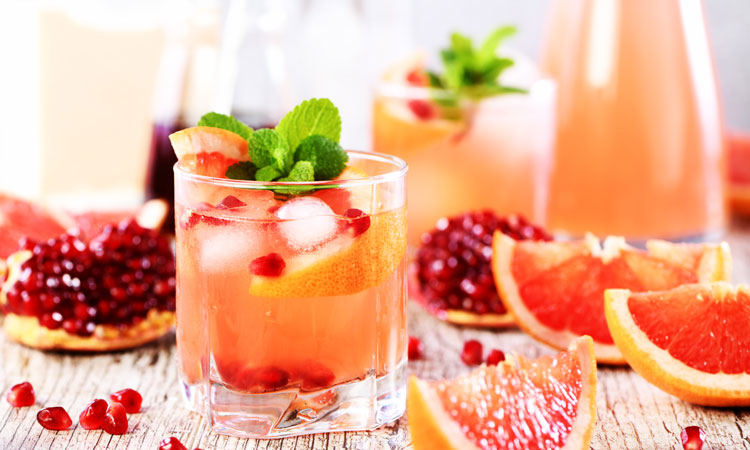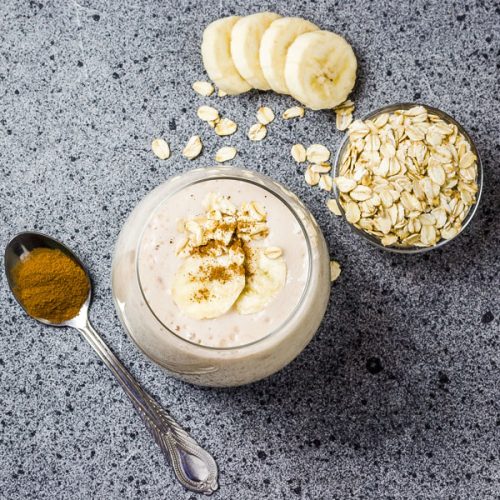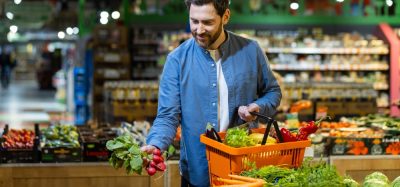Flavours of tomorrow: What’s trending for 2021?
- Like
- Digg
- Del
- Tumblr
- VKontakte
- Buffer
- Love This
- Odnoklassniki
- Meneame
- Blogger
- Amazon
- Yahoo Mail
- Gmail
- AOL
- Newsvine
- HackerNews
- Evernote
- MySpace
- Mail.ru
- Viadeo
- Line
- Comments
- Yummly
- SMS
- Viber
- Telegram
- Subscribe
- Skype
- Facebook Messenger
- Kakao
- LiveJournal
- Yammer
- Edgar
- Fintel
- Mix
- Instapaper
- Copy Link
Posted: 18 May 2021 | Chris Whiting | 2 comments
Chris Whiting from Synergy Flavours highlights the key drivers behind future flavour trends and what to look out for this year.


The food industry is heavily influenced by a range of sources – travel, social media, global events, culture, celebrities, the list goes on. Trend-tracking technology and processes are important for identifying trends as they emerge, but how can manufacturers work to stay several steps ahead of consumers to predict what they might want next?
Synergy Flavours conducts extensive research every year to predict the rising stars in flavours. Consumer buying habits, bloggers, food writers and futurologists have all helped to inform research, which is also benchmarked with real data from product launches and global search trends. Here, we explain the influences that drive future flavour trends and look at the trends set to take the top spot in 2021.
What influences innovation?
Staying ahead of the curve has always been the deciding factor between success and failure within the food industry; but in today’s world of social media, this is even more acute. The impact of social media and blogs on the food industry is producing a wealth of data for researchers to analyse and pull trends from. There are 377 million Instagram posts using #food and 39.5 million for #foodblogger, illustrating just how much engagement there is around food on these platforms. Data suggests that Millennials spend five days per year looking at photos of food on Instagram, while 33 percent of 18-24-year-olds in the UK use social media platforms to share pictures of food.1
The relationship between brands and consumers has changed forever. With easier access to their most beloved food and drink products through social media, the general public has more say than ever in the direction of the market. This is why understanding them has become so critical to a product’s success.
Since the start of the global pandemic, more emphasis has been placed on foods and beverages that might help to boost immunity
There are also other aspects to consider, such as convenience. With food from around the world becoming increasingly accessible, many customers are opting for on-the-go options that are either ready to eat or can be cooked within minutes. Nowadays, you do not even have to get off your sofa, as food can be delivered to your door through apps such as Deliveroo, which has seen a major revenue growth of over 650 percent each year since its founding in 2013.2
In addition to this, manufacturers must be mindful of other challenges and pressures faced by the food industry, such as the renewed demand for sugar-, fat- and salt-reduced options. Reducing these ingredients (or removing them altogether) can create challenges in terms of both taste and also formulation – reduced fat can affect the structure of products like cake and biscuits, while reducing salt/sugar affects the taste, which is why flavourings are so important for maintaining the taste that consumers love.
Future trends
When researching upcoming trends that are likely to influence the industry, flavour companies must work upwards of a year in advance – but we could not predict a global pandemic. The food industry was one of the first to feel its effects, with supermarkets experiencing panic buying and restaurants having to close their doors. Since then, things have settled into the ‘new normal’, but consumer buying and eating habits have changed – perhaps forever – and this will impact the trends for 2021 and beyond. As well as an acceleration of trends that were already emerging, we will also see new trends directly resulting from the impact of the pandemic. The following are some of the trends we expect to see in 2021.
1. Immunity and wellness
Since the start of the global pandemic, more emphasis has been placed on foods and beverages that might help to boost immunity. This includes a rise in vitamin C and general vitamin and mineral fortification – citrus remained the most sought-after fruit during the pandemic, as consumers looked to bolster their immune systems. Although consumers are more interested in the link between their diet and immune system, there is still limited (and conflicting) evidence to suggest that certain foods can boost immunity, and the general advice is to follow a balanced diet. 

Gut health is increasingly being linked with holistic health and immunity, and sales of kefir products soared by almost 50 percent in the four weeks before lockdown started in the UK.3 There has been a growing trend of digestive health claims and nuanced claims in foods, as opposed to just stating high fibre. With digestive health increasingly being recognised as a key element of overall wellbeing, this trend is likely to continue with increased emphasis on mental wellbeing during the current crisis and for many years to come. Some consumers are looking beyond this and considering other natural sources that offer perceived health benefits, with 72 percent of consumers also expressing an interest in nutrition products that contain ‘health-boosting’ herbs and botanicals.4
Such ingredients have roots in Chinese medicine, where spices and herbs such as turmeric have long been used to treat common ailments and symptoms with the belief that naturally sourced products would deliver medicinal benefits. There is also a growing global interest in vitamin and mineral supplementation – either through capsules or food and drink fortification.
For manufacturers, highlighting healthy ingredients in products is even more important now than prior to 2020.
2. Holistic health
A survey from Mintel found that 39 percent of consumers have eaten comfort food to tackle stress in the last 12 months, and this has also been seen during the recent times of uncertainty. Crisps, chocolate and ice cream all registered a surge in sales throughout Europe in the weeks following the implementation of lockdown restrictions. However, we can expect consumers to be looking towards healthier options to improve their overall health as things slowly return to normal, with reduced fat and sugar options set to overtake treats like cookies and cakes, and many consumers looking towards vitamin-rich foods to improve their diet. For example, in Asia, there has been increased sales of food and drink products perceived to be healthy (such as fresh food, bottled water and dairy), and a drop in sales of typically unhealthy options, such as alcohol and snacks.5
The events of 2020 have led people to focus more on their physical and mental health. High percentages of consumers identify the health of their family and friends, as well as their own physical health, as top concerns, with 71 percent of Britons citing their family’s health as their top concern amid the pandemic.6 Consumers are increasingly looking for ingredients that promote mental wellness through stress relief, calm, sleep promotion and comfort. As such, botanicals and herbs, which have perceived wellness-boosting properties, are experiencing steady growth across a number of snack and beverage categories.
3. Sofa surfing
In 2009, during the peak of the last economic crisis, there were more European food and beverage product launches than there have been in the years since. Driven by private label launches in particular, which saw a 22 percent rise in 2009,6 manufacturers may be able to capitalise on the widespread travel restrictions and their knock-on effect to the tourism trade, which will have a direct impact on many consumers who are not able to travel the world for many months to come.
Sweet tropical flavours (such as salted mango, pomegranate, guava and starfruit) and cuisines such as Japanese and Korean are likely to benefit from this shift in the way we seek tastes from overseas.
4. Fantasy and nostalgia
With such upheaval and uncertainty experienced globally throughout 2020, it is little wonder that consumers are also searching for some light relief. It all started with the unicorn trend in 2017, since which time there has been a wave of fantasy‑inspired product launches that offer an escape from reality. While it might sound niche, many mainstream brands are tapping into this idea of fantasy and theming product launches around anything from fairies and pixies, to mermaids, dinosaurs and dragons. Ranging from gin, to cupcakes, sweets, ice cream and frappuccinos, the flavours used in these products could include smoky blood orange, pineapple lemonade or creamy coconut.
Nostalgia is playing a part too, with a fondness for nostalgic blasts-from-the-past. There has been a resurgence of sweetshop and fairground-associated flavours, and this trend offers manufacturers a new area for innovation across a range of products. From the recent launch of sweet-inspired ice lollies, such as Dip-Dab and Flump, to whey protein-flavoured products like Drumsticks and Love Hearts, the nostalgic influence will only grow in the coming months as consumers seek comfort from sentimental flavours associated with their childhoods.
At the forefront of innovation
The flavour industry has always been at the forefront of innovation, but the ever-increasing consumer appetite for exciting flavours is promoting an even more dynamic arena in which to operate. While demand has increased, so has the ability to track and anticipate certain trends. Flavour companies are therefore in a strong position to respond quickly and provide customers with the very latest in new product innovation.
Chris Whiting
Chris is a category manager for Synergy Flavours. Part of the Carbery Group, Synergy is a supplier of flavour and taste solutions for the food, beverage and nutrition industry.
References
1. How COVID-19 has impacted media consumption, by generation Visual Capitalist, https://www.visualcapitalist.com/media-consumption-covid-19/
2. About us, Deliveroo, https://deliveroo.co.uk/about-us
3. Pandemic triggers increased demand for gut health products, The Grocer, 2nd April 2020, https://www.thegrocer.co.uk/dairy/pandemic-triggers-increased-demand-for-gut-health-products/603605.article
4. COVID-19 will radically change specialised nutrition, Mintel, March 2020
5. Asian consumer behaviour may change forever after Covid-19, Inside Retail Asia, 16 April 2020 https://insideretail.asia/2020/04/16/asian-consumer-behaviour-may-change-forever-after-covid-19/
6. Food and drink brands can learn from the 2008-09 recession, Mintel, April 2020










Great article, Chris. We also save seen a trend in eating healthier and including nuts and seed in different ways through the daily meals.
Hi Chris, this was a very insightful read. With the Pandemic there has been a huge shift in the food choices of people and I feel it’s likely to stay for good. Let’s see.